December 2024
- [Design] Creating Product Explainer Videos that convert. We had to do these as part of a grad school course, and I’m so happy we did. Learning animation has been one of the most useful (but underrated skills in design.
- [Design] How to turn a photo into line art
- [Design] How to Make Paper Snowflakes

- [Design] What font matches your personality
- [Design] From Jessica Hische
- I see a lot of aspects of my career as burners on a stove—some are turned up to high, some are on simmer. I get to choose which burners are turned up based on what my life is like and what I’m most interested in.
- You can’t run them all on high at the same time, it uses too much energy. So if something is not a success financially, but still breaks even and fills my cup in other ways, I just think of it as being on simmer.
- This is how I’m able to do so much all the time. Very few things are turned all the way up, most things are on simmer. And then when the big burner is having a lull, I turn up the little burners.
- [Design] Visual Thinking series, Part 5: Basic Shapes from Sketch Group
Basic shapes are the foundation of any drawing, whether you’re sketching complex ideas or simple icons.
Let’s start with circles, squares, and triangles. Each shape has a distinct character:
- circles are inviting and smooth
- squares feel grounded and reliable, and
- triangles have an energy that feels directional or even a bit “edgy.”
Try drawing each shape multiple times until it feels natural. Practice making them in different sizes, and if you’re using markers, experiment with varying line thickness too.
Once you’re comfortable, you can combine shapes to make objects. For instance, place a triangle atop a square, and suddenly you have a house! Stack circles to make a snowman or a light bulb. The goal is to recognise that most objects can be simplified into these basic forms. Don’t worry if they look rough—this is about loosening up, not perfection. Your confidence will grow as you start to recognise familiar shapes in complex objects, helping you quickly sketch ideas during a meeting or presentation.
Another exercise is to play with arrangement. Draw a series of shapes and think of them as “visual placeholders” for concepts. A circle could represent a person, a square might symbolise data, and a triangle could mean system.
Practicing this way turns these basic shapes into a versatile language you’ll use again and again. Knowing that almost everything starts from simple shapes is a powerful confidence booster.
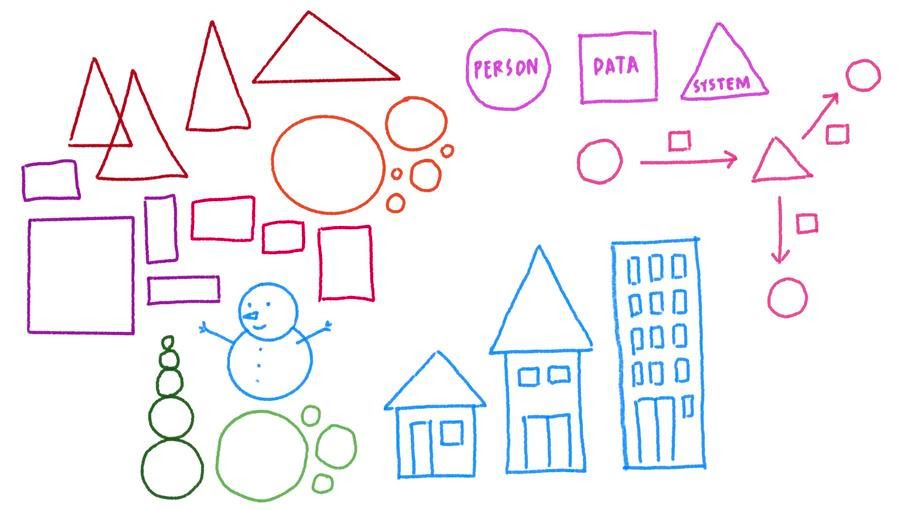
One final tip as you explore what's possible with basic shapes: think of the acronym PROCLASS.
PROCLASS sketching refers to drawing shapes where we play with:
- Precision (drawing neat, closed, carefully placed lines, and are not unintentionally messy, open shapes)
- Rotation (a few degrees, or completely upside down)
- Overlap (drawing shapes on top of each other)
- Colour (playing with different colours)
- Linework (mixing up the thickness and style of the line)
- Alignment (deliberately lining up shapes on the page)
- Stretch (elongating the shape)
- Scale (increasing or decreasing the size of the shape)
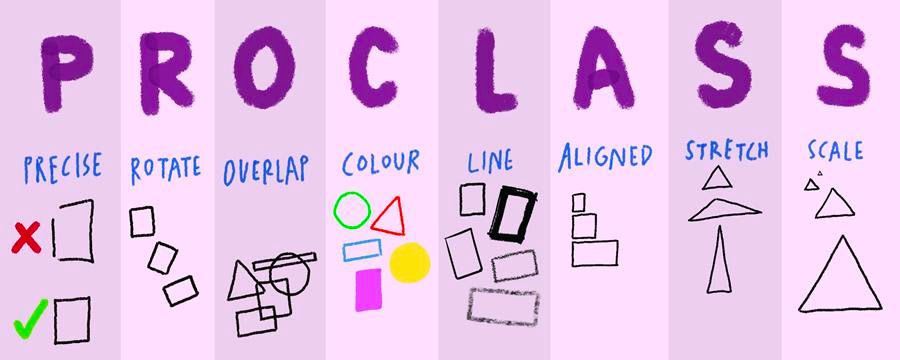
Drawing shapes with the PROCLASS acronym in mind will help you find ways to create variety and visual interest in your sketches. It's amazing how much can you do with simple shapes when viewed through this easy-to-remember lens.
- [Design] Visual Thinking Series, Part 4: Playing with Contrast from Sketch Group
Contrast is an essential design principle that makes your visuals clear and compelling. Without contrast, everything on the page would feel flat and hard to differentiate. Begin by experimenting with contrasting thick and thin lines or dark and light shapes. Draw a large, bold square next to a smaller, thin-outlined circle. Which one stands out more? Your eye is naturally drawn to the bold, dark square, making it a useful technique for emphasis. By using contrast, you guide your viewer to focus on what matters most in your sketch.
Take it a step further and consider how contrasting shapes can show relationships. Place a thick rectangle as a “header” or main idea, then surround it with thinner, lighter circles representing supporting points or subtopics. Contrast here creates a visual hierarchy, leading the viewer through the content in a logical flow. This technique is especially useful in complex visual notes, where you want to establish clear focal points.
Practice combining dark and light, thick and thin, and even different sizes on the same page. Place a series of small, thin circles next to one large, dark square. Contrast is about making certain elements “pop,” while others remain in the background, so the viewer can navigate your visual effortlessly. The more you practice, the more contrast will become an instinctive way to organise ideas on the page.
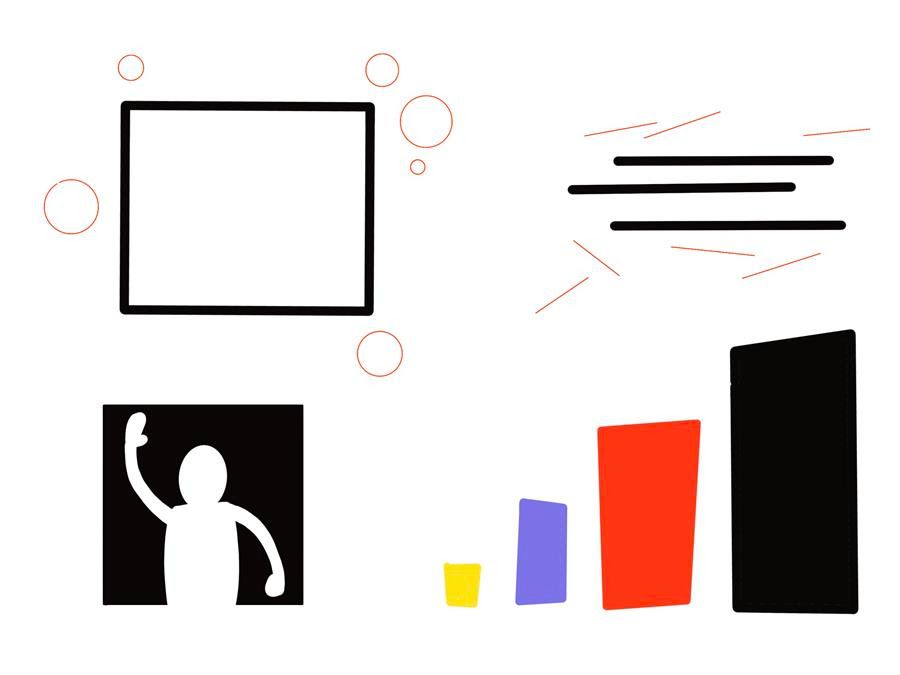
And as you can see in the examples, contrast also has a role to play when comparing shapes and objects on the page. It's a powerful principle—contrast can create a sense of fun, spark imagination (is that figure above in a dark room, or in front of an open door? Are they turning on the light, or asking a question?)
Call to Action: Next time you’re note-taking or sketching ideas, use contrast to create a visual hierarchy. Try placing your main idea in a large, bold shape, with supporting points in smaller, lighter shapes. If you’re brainstorming, sketch your central idea in bold, adding related concepts in thin-lined circles around it. See how it transforms your notes into an organised, engaging visual!
- [Finance] One of my goals this year is to jump back into learning about finance. I have been watching these webinars by SmartPurse (and have taken their classes before as well).
- [Finance] Women and Finance by Unconform
- [Finance] Really loved this approach to teaching kids about finances
- [Tech] How Whatsapp ate the world
- [Travel] As someone who creates a lot of travel content for others, I 100% agree with this. Mine is a Notion doc, but close enough.
- [Psychology] Revisiting the Spiritual Violence of BS Jobs
- [Psychology] A Hater’s Guide to Gratitude
- [Psychology] Aligning with the Cycles of Astrology
- [Psychology] I can't remember where I saw these but thought they were brilliant re ambition and capability.

The ideal is a perfect balance between ambition and capability (see image below). Be ambitious but follow up with credible skills - or build great skills and push yourself to use them!
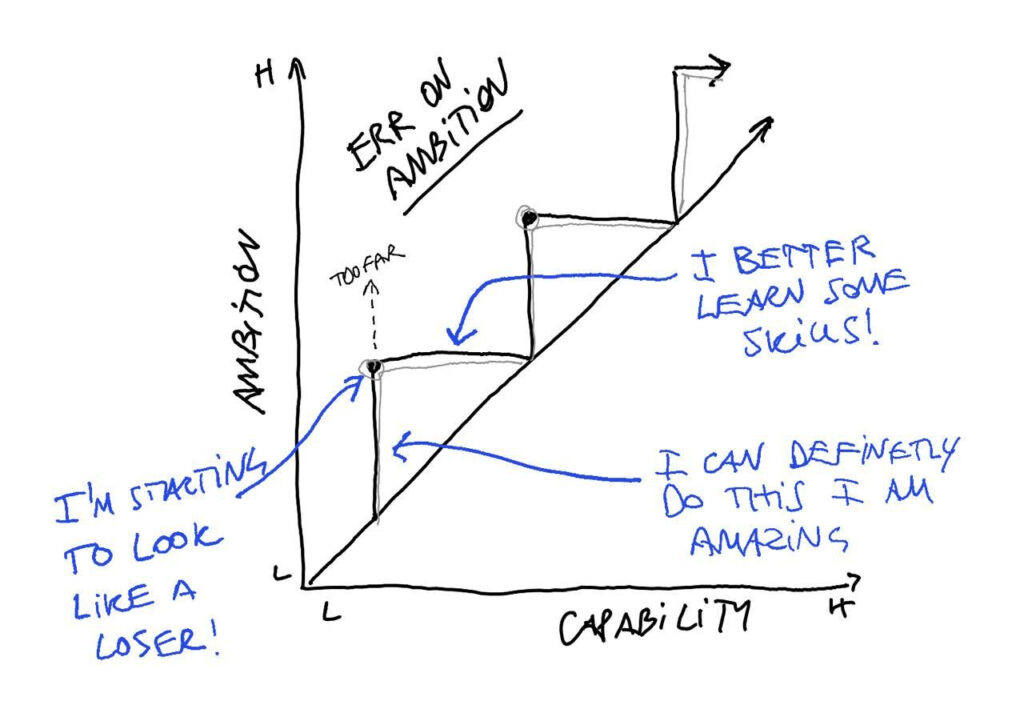
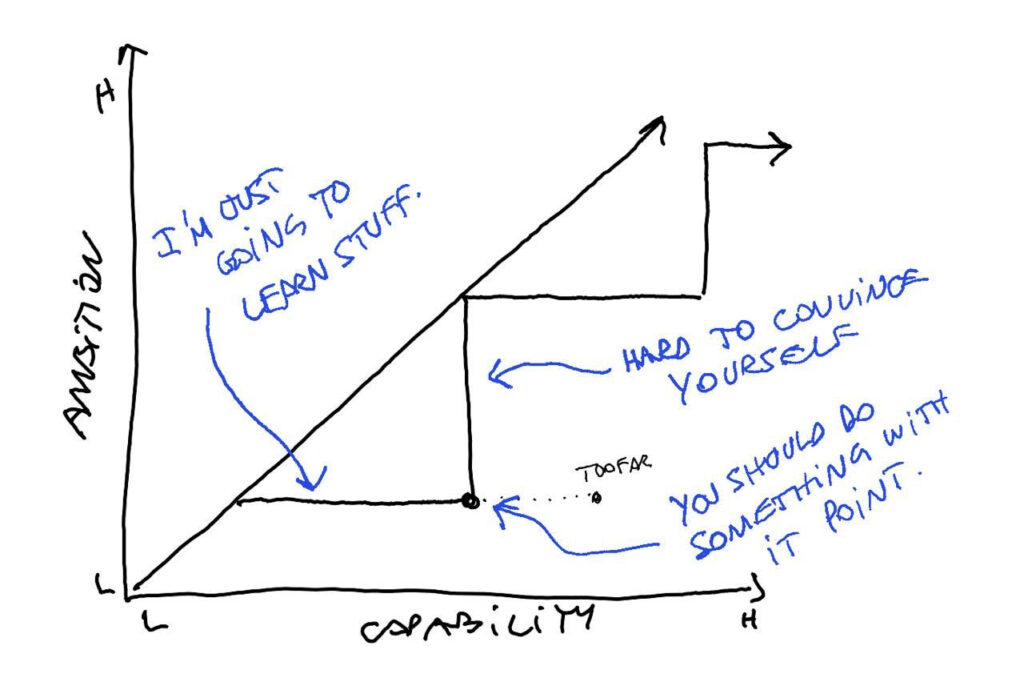
Another observation is that in business, Australians find American people in that loser category cos Americans talk themselves up a lot and advertise their ambition with a giant megaphone, something Australians find embarrassing - the whole tall poppy syndrome rubbish.
- [Psychology] This is a very Global North perspective but the prompts could easily be used in June in the Southern Hemisphere. Taken from Ness Labs
- Wintering: The act of withdrawing from the world to focus on one’s inner world; active acceptance of dark and cold times; a form of calm resilience.
- Wintering was initially a term used in biology to describe how certain animals and birds survive cold seasons. While some species migrate to warmer climates, others stay in place and adapt their behaviors and physiology to survive harsh conditions.
- This biological concept was translated to our human experience by Katherine May in her 2020 book Wintering, where she showed how humans, just like wintering animals, need periods of retreat to survive life’s different seasons. In essence, just as nature moves through cycles of activity and rest, humans too need periods of pulling back and recharging.
- Research supports this idea that our bodies respond to seasonal changes with shifts in hormones, sleep patterns, and energy levels. Fighting these natural rhythms can lead to increased stress, decreased immunity, and emotional exhaustion.
How to Practice the Art of Wintering
- Wintering isn’t about withdrawing completely—it’s about finding a balance between rest and activity, solitude and connection. Like a tree pulling energy into its roots, it’s about gathering strength for your next season of growth. Here are a few practices to guide you:
- Build a winter nest. Create a cozy area in your home for rest and reflection. Add soft lighting, warm blankets, herbal teas, and journaling supplies. Make it a screen-free sanctuary.
- Adjust your rhythm. Cut back on non-essential obligations (great exercise to practice saying no!) and leave room for spaciousness in your days. Pay attention to your energy levels and let yourself rest more deeply when needed.
- Nurture inner growth. Start a creative project purely for joy, not productivity. Set aside 15 minutes daily for reflective writing, reading, drawing, kitting (?) or whatever you’d like to do. (I’m reading and LOVING Elena Ferrante right now!)
- Host friends. Focus on quality over quantity in your relationships. Cook nourishing meals, bake, or host intimate gatherings like tea, dinner, or a cozy, festive Sunday brunch.
- As you move through December, consider how you might embrace wintering with intention. What could you let go of to create more space? Where would you like to focus your time and energy?
- The answers will vary for each of us, but the invitation is universal: rather than simply enduring the darker moments, let’s honor them as opportunities for renewal and transformation.
- [Random] Continue and Persist Letters instead of Cease and Desist Letters. The video is quite silly.
- [Urban Design] Ageing, static and skint: Nine charts that explain what's going on with London transport
- [Urban Design] Melbourne’s newest art installation really making people think about their housing choices.


No Comments.